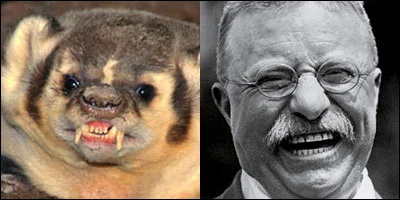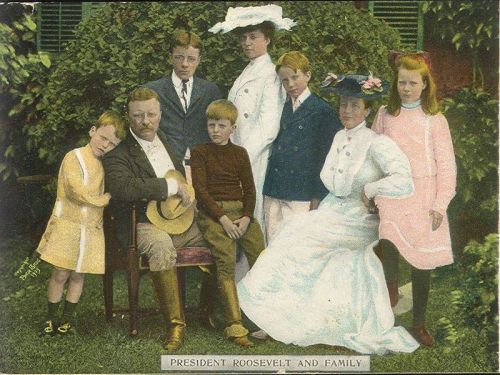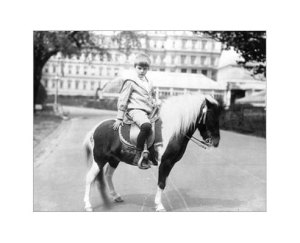
In the spring of 1903, President Teddy Roosevelt embarked on his much-delayed and much-anticipated rail tour of the American West. He was to travel 14,000 miles over 8 weeks, visiting 25 states and an estimated 150 towns and cities, where he would make over 200 speeches. His “Western trek,” as he called it, included stops at Yellowstone, the Grand Canyon, and Yosemite. He couldn’t wait to get away from the stress of politics in Washington.
On May 3, Teddy attended a church service in the cowtown of Sharon Springs, Kansas. Teddy recounted that day to reporters:
“There were two very nice little girls standing in the aisle beside me. I invited them in and we all three sang out of the same hymn book. They were in their Sunday best and their brown sunburned little arms and faces had been scrubbed till they almost shone.
…When church was over, I shook hands with the three preachers and all the congregation, whose buggies, ranch wagons, and dispirited-looking saddle ponies were tied to everything available in the village. I got a ride myself in the afternoon, and on returning, found that all the population that had not left had gathered solemnly around the train.”
The townspeople of Sharon Springs had never seen anything like Teddy’s train. Six “gleaming private cars” made up the length of it. “First, a baggage car; then the Atlantic, a club car heavy with wood and leather, plus a fully-equipped barbershop; then the Gilsey diner, stocked with champagne and cigars; then the Senegal, a big Pullman carrying reporters, photographers, telegraphers, and Secret Service men; then the Texas, a compartmental sleeper for White House staff, and any guests Roosevelt might ask to ride along.
“Last came the President’s own Elysian, seventy feet of solid mahogany, velvet plush, and sinkingly-deep furniture. It had two sleeping chambers with brass bedsteads, two tiled bathrooms, a private kitchen run by the Pennsylvania Railroad’s star chef, a dining room, a stateroom, with picture windows, and an airy rear platform for whistle-stop speeches.” (1)
Back to Teddy’s recollection:
Among the [crowd gathered on the train platform] was a little girl who asked me if I would like a baby badger which she said her brother Josiah had just caught. I said I would, and an hour or two later, the badger turned up from the little girl’s father’s ranch…The little girl had several other little girls with her, all in clean starched Sunday clothes and ribbon-tied pigtails. One of them was the sheriff’s daughter, and I saw her nudging the sheriff, trying to make some request, which he refused. So I asked what it was and I found that the seven little girls were exceedingly anxious to see the inside of my [train] car, and accordingly I took them all in. The interior arrangements struck them as being literally palatial….”

Teddy Roosevelt's one-legged rooster
When the president returned to the White House, Josh was added to the family’s assortment of pets. But he soon began to hiss like a teakettle and nip at guests’ ankles, so he was donated to the Bronx Zoo.
(1) Morris, Edmund. Theodore Rex. New York: Random House, Inc., 2001.
 Ike Hoover served in the White House for over forty-two years, ultimately becoming Chief Usher in charge of the day-to-day operations of the presidential mansion.
Ike Hoover served in the White House for over forty-two years, ultimately becoming Chief Usher in charge of the day-to-day operations of the presidential mansion. 




















